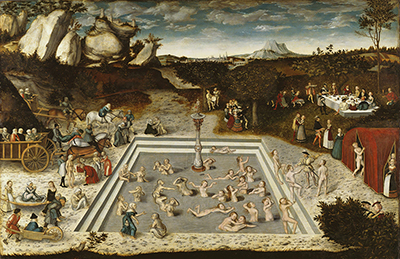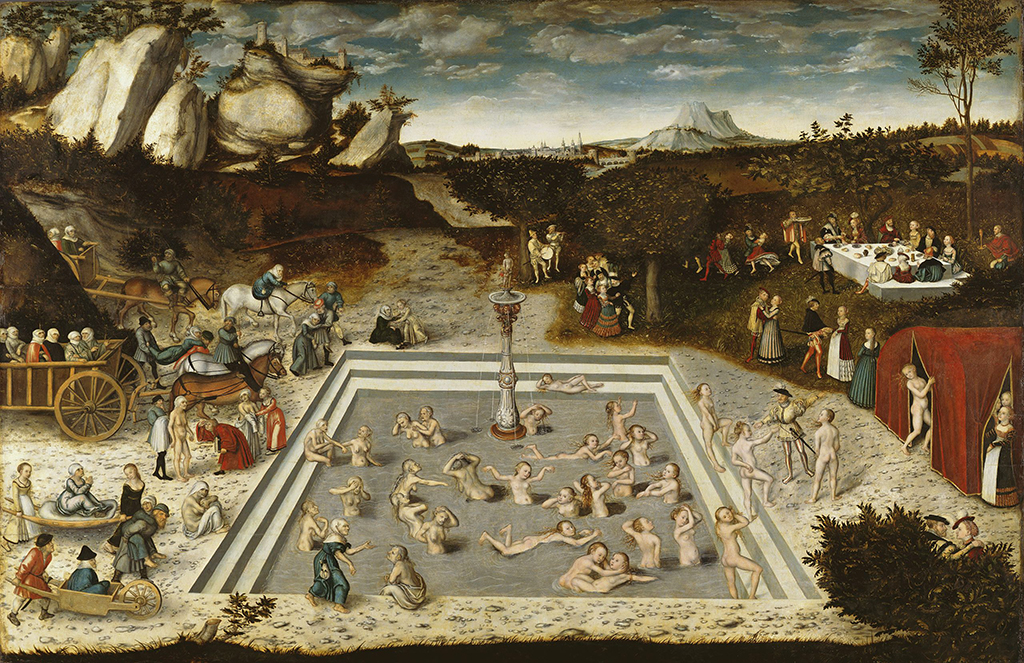The impressive composition is one of Lucas Cranach's largest and most complex. It was finished in 1546 and is titled The Fountain of Youth.
There is a larger image of the artwork at the bottom of this page which better illustrates the different elements of detail that cover the entire canvas. There are countless figures right across the scene, some clothed and some not. On first viewing it appears to be an environment of fun and happiness, with many bathing in the fountain. It is square shaped, with steps to each side and a main fountain that stands tall at the back. It looks particularly ornate and carefully designed, where as the rest of the fountain is fairly simple and angular. It appears to be predominantly young women that are relaxing and playing together in the fountain's water whilst others look on from the side.
It seems that the fountain itself has magical qualities and can turn older women back into the more youthful selves. They would then relax by the side afterwards to enjoy the food, music and other entertainment. This particular artwork may have been worked on by both Cranach the Elder and Younger, perhaps also some other members of the workshop too. For some time there was a belief that it might have been purely the work of his son, but the most likely explanation appears to now be that the Elder produced most of this scene, with some help from other colleagues. The way in which he captured the bathers' bodies is in line with other paintings from his career.
There is a sprawling backdrop to this painting which is entirely in keeping with the typical style of artist Cranach. He frequently placed detailed landscape scenes into his work, even though they were not the main focus of each painting. He enjoyed this genre, even though it would be centuries later before artists produced paintings which feaured landscapes by themselves, without any other additions such as figurative portraits or religious themes. This would seem odd today because of the affection that is held for the landscape paintings by the likes of Monet and Turner, but during the Northern Renaissance you would not create a career from skills in landscape art alone. Fortunately, Cranach the Elder held considerable talents and a strong passion for several other genres too and had the skill to put them together on the same canvas, as shown here in The Fountain of Youth.





